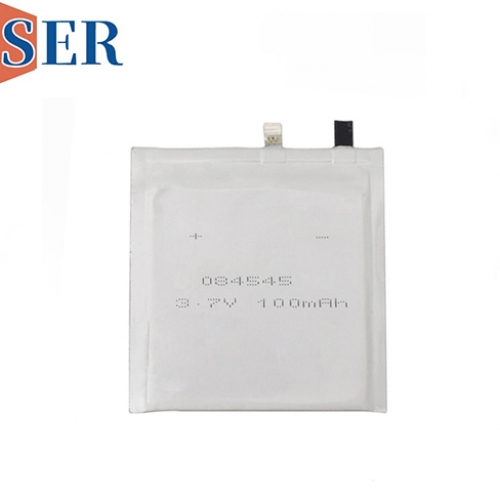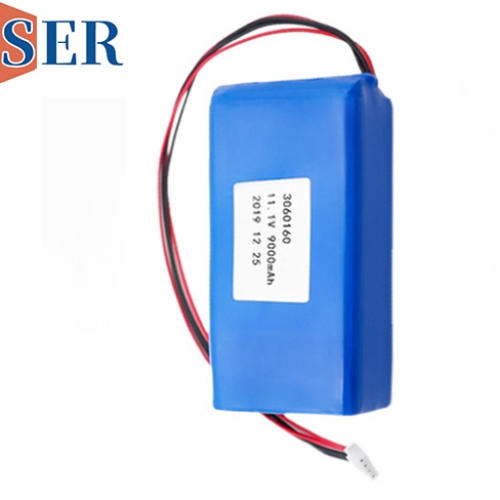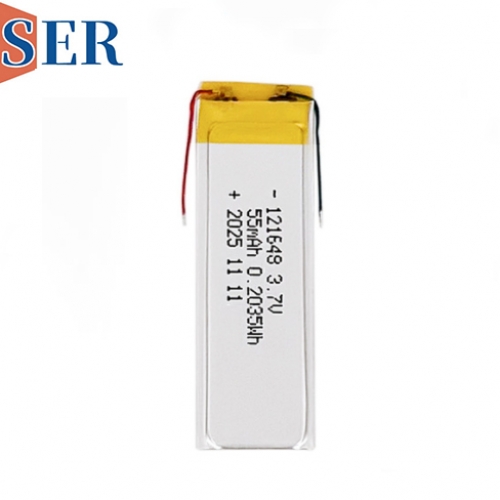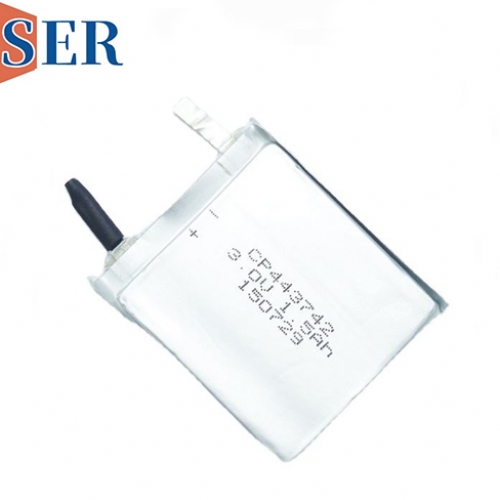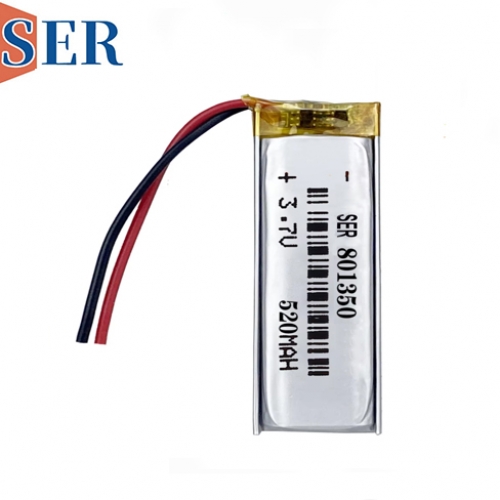ER26500 Battery + SPC1520 Capacitor with Resettable Fuse
Optimized Power Solution for Smart Gas Metering: ER26500 Battery + SPC1520 Capacitor with Resettable Fuse
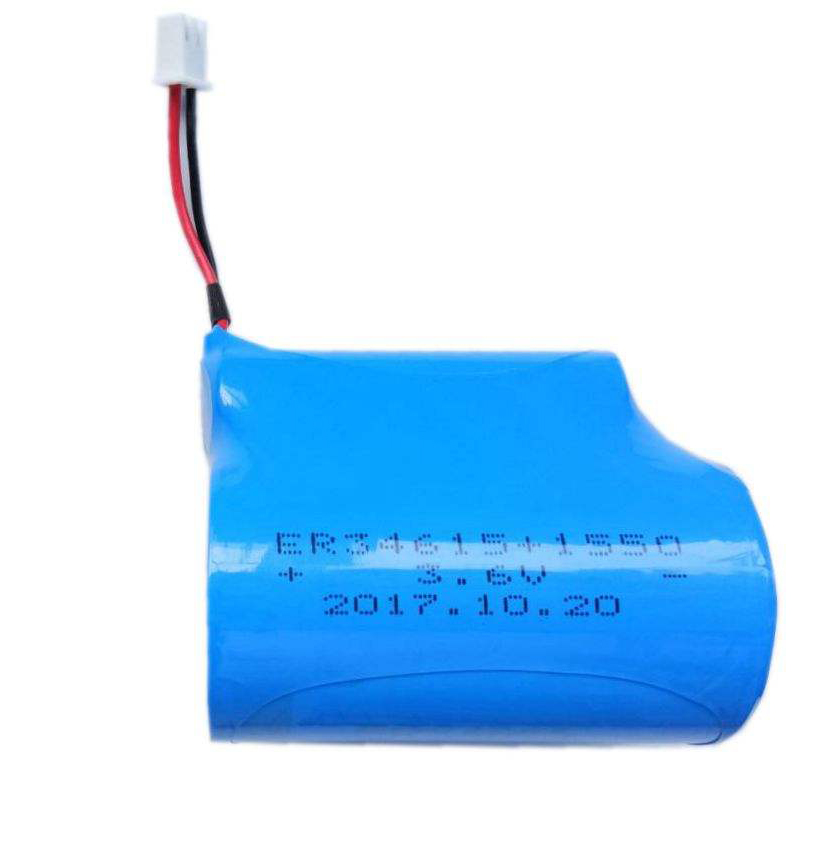
Abstract
Smart gas metering systems represent a critical component of modern utility infrastructure, facilitating accurate billing, efficient resource management, and real-time monitoring. To meet the rigorous demands of these applications, a robust and reliable power solution is imperative. This article explores the integration of the ER26500 lithium thionyl chloride (Li-SOCl₂) battery with the SPC1520 lithium-ion capacitor, complemented by a 0.75A resettable fuse, wires, and connectors, to create an advanced power system tailored for smart gas meters. The SPC1520, also recognized under various designations such as Ultra Pulse Capacitor, HPC1520, EPC1520, UPC1520, or SPC1520, offers exceptional performance characteristics that, when paired with the ER26500 battery, result in a power solution distinguished by longevity, wide temperature operation, high output power, and superior pulse capability.
Introduction
The evolution of gas metering technology from traditional mechanical systems to sophisticated smart meters has necessitated advancements in power solutions. Smart gas meters require reliable energy sources capable of supporting continuous operation, handling peak power demands during data transmission, and enduring harsh environmental conditions. The ER26500 Li-SOCl₂ battery, renowned for its high energy density and long shelf life, combined with the SPC1520 capacitor, known for its high power density and rapid charge/discharge capabilities, presents an optimal pairing for these applications.
Components of the Power Solution
1. ER26500 Li-SOCl₂ Battery
The ER26500 is a primary lithium battery employing a Li-SOCl₂ chemistry, celebrated for its exceptional energy density and longevity. This chemistry provides a stable voltage output over an extended period, making it ideal for applications where maintenance or battery replacement is impractical or costly. The ER26500's cylindrical form factor (D-size) is compatible with a variety of industrial applications, including smart gas meters, where space constraints and reliability are paramount.
2. SPC1520 Lithium-Ion Capacitor
The SPC1520 is a type of lithium-ion capacitor (LIC), a hybrid energy storage device that combines the high energy density of batteries with the high power density and long cycle life of capacitors. Unlike traditional supercapacitors, LICs utilize a lithium-ion intercalation mechanism in the cathode, allowing for higher energy storage capabilities while maintaining rapid charge and discharge rates. The SPC1520 is specifically engineered to deliver high pulse currents, making it suitable for applications requiring bursts of power, such as data transmission in smart meters.
3. 0.75A Resettable Fuse
Incorporating a resettable fuse, rated at 0.75A, into the power solution enhances system safety and reliability. This fuse protects the circuit from overcurrent conditions that could arise from short circuits or component failures. Unlike traditional fuses, which require replacement after blowing, resettable fuses automatically reset once the fault condition is removed, reducing maintenance costs and downtime.
4. Wiring and Connectors
High-quality wires and connectors are essential for ensuring efficient power transfer and mechanical robustness. The choice of materials and design must consider factors such as current-carrying capacity, resistance to environmental factors (e.g., moisture, temperature extremes), and ease of assembly. Properly selected connectors also facilitate maintenance and potential upgrades to the smart meter system.
Key Features and Benefits
1. Long Storage Life and Low Self-Discharge Rate
One of the standout features of the ER26500 battery is its minimal self-discharge rate, which ensures that the battery retains a significant portion of its charge even after prolonged storage. Under standard conditions (+23℃±2℃), the self-discharge rate is less than 2% after one year. This characteristic is particularly advantageous for smart gas meters, which may be installed and remain inactive for extended periods before activation. The SPC1520 capacitor, while not a primary energy storage device, complements the battery by maintaining its charge during dormant periods and providing immediate power when needed, without contributing significantly to self-discharge.
2. Wide Operating Temperature Range
Smart gas meters are often deployed in environments with extreme temperature variations, from the frigid cold of winter to the sweltering heat of summer. The ER26500 battery is designed to operate effectively across a broad temperature spectrum, from -55℃ to +85℃, ensuring reliable performance in even the most challenging climates. The SPC1520 capacitor further enhances this capability with its own wide operating temperature range of -40℃ to +85℃. This resilience to temperature extremes minimizes the risk of system failure and ensures consistent metering accuracy and data transmission.
3. High Output Power
The combination of the ER26500 battery and SPC1520 capacitor provides a robust power solution capable of delivering high output power when required. The SPC1520, in particular, is engineered to handle significant pulse currents. For instance, the SPC1550 variant (a higher capacity version potentially related to the SPC1520 series) can achieve a maximum pulse current of 3000mA and a maximum instantaneous output power of 15W. This capability is crucial for smart gas meters that must transmit data wirelessly, a process that demands a surge of power to activate the transmitter and send the signal over the network. The capacitor's ability to deliver these high-power pulses on demand ensures reliable communication without depleting the battery prematurely.
4. High Pulse Capability
Beyond data transmission, smart gas meters may encounter other scenarios requiring high pulse currents, such as activating valves or sensors. The SPC1520's capacity to deliver pulse currents up to 5A makes it well-suited for these applications. This high pulse capability ensures that the system can respond swiftly and effectively to operational demands, maintaining performance and reliability even under transient high-load conditions.
5. No Passivation and High Voltage Response
A common issue with some battery chemistries is passivation, where a protective layer forms on the electrodes, leading to increased internal resistance and reduced voltage output over time. The ER26500 battery, however, does not suffer from this phenomenon, thanks to the stable chemistry of Li-SOCl₂. This characteristic, combined with the SPC1520's ability to provide immediate power, ensures a consistent and high voltage response throughout the operating life of the smart meter. There is no voltage delay, meaning the system can perform optimally from the moment it is activated until the end of its service life.
Applications in Smart Gas Metering
1. Continuous Metering and Data Logging
The primary function of a smart gas meter is to accurately measure gas consumption and log this data over time. The ER26500 battery provides the steady, long-lasting power required for continuous operation, while the SPC1520 capacitor ensures that any power interruptions or fluctuations do not affect data integrity. This reliability is crucial for both consumers and utility providers, as accurate billing and resource management depend on precise metering.
2. Wireless Data Transmission
Modern smart gas meters often incorporate wireless communication modules to transmit usage data to utility companies. This process requires a burst of power to activate the transmitter and send the data. The SPC1520 capacitor excels in this scenario, delivering the necessary high-power pulse to the communication module without overloading the battery. This capability enables frequent and reliable data transmission, facilitating real-time monitoring and efficient utility management.
3. Alarm and Notification Systems
Smart gas meters may include alarm systems to detect leaks, tampering, or abnormal usage patterns. These alarms require immediate power to activate audible or visual indicators and transmit alerts to the utility company. The high pulse capability of the SPC1520 ensures that these alarms function promptly and effectively, enhancing safety and security.
4. Valve Actuation
In some advanced smart gas meters, valves can be remotely controlled to shut off gas supply in case of emergencies or non-payment. Actuating these valves may require a high current pulse, which the SPC1520 can provide without impacting the overall system's energy efficiency or battery life.
Environmental and Operational Considerations
1. Environmental Sustainability
The choice of Li-SOCl₂ batteries and lithium-ion capacitors aligns with efforts to promote environmental sustainability. These technologies offer long lifespans, reducing the frequency of battery replacements and associated waste. Additionally, the materials used in their construction are often recyclable, further minimizing environmental impact.
2. Safety and Compliance
The integration of a resettable fuse enhances the safety of the power solution by protecting against overcurrent conditions. This feature, combined with the inherent safety characteristics of Li-SOCl₂ batteries and lithium-ion capacitors, ensures compliance with industry safety standards and regulations.
3. Cost-Effectiveness
While the initial investment in a high-performance power solution may be higher, the long-term cost savings are substantial. The extended lifespan of the ER26500 battery and the durability of the SPC1520 capacitor reduce maintenance and replacement costs. Additionally, the reliability of the system minimizes downtime and ensures accurate billing, preventing revenue loss for utility providers.
Future Prospects and Innovations
The field of smart metering is continually evolving, driven by advancements in technology and the increasing demand for energy efficiency and sustainability. Future innovations in power solutions for smart gas meters may include:
1. Enhanced Energy Harvesting
Incorporating energy harvesting technologies, such as piezoelectric or thermoelectric generators, could supplement the power provided by the ER26500 battery and SPC1520 capacitor. This would further extend the system's lifespan and reduce reliance on primary batteries.
2. Advanced Battery Management Systems (BMS)
The development of sophisticated BMS could optimize the performance of the Li-SOCl₂ battery and lithium-ion capacitor, monitoring parameters such as voltage, current, and temperature to ensure safe and efficient operation. These systems could also predict battery failure and schedule maintenance proactively.
3. Integration with IoT and Smart Grid Technologies
As smart gas meters become increasingly integrated with the Internet of Things (IoT) and smart grid technologies, the demand for more powerful and reliable power solutions will grow. Future power systems may need to support more frequent and higher-bandwidth data transmission, necessitating further enhancements in pulse power capabilities and energy storage.
Conclusion
The integration of the ER26500 Li-SOCl₂ battery with the SPC1520 lithium-ion capacitor, complemented by a 0.75A resettable fuse, wires, and connectors, presents a cutting-edge power solution tailored for smart gas metering applications. This combination leverages the strengths of both battery and capacitor technologies, offering long storage life, low self-discharge, wide operating temperature ranges, high output power, and superior pulse capability. The absence of passivation and consistent high voltage response ensure reliable performance throughout the system's operational life.
As the smart gas metering landscape continues to evolve, the demand for robust, efficient, and sustainable power solutions will only intensify. The ER26500 + SPC1520 power system stands as a testament to innovation in energy storage, meeting the present needs of smart gas meters while laying the groundwork for future advancements in the field. By choosing this advanced power solution, utility providers can ensure accurate metering, reliable communication, and efficient resource management, ultimately benefiting both consumers and the environment.

